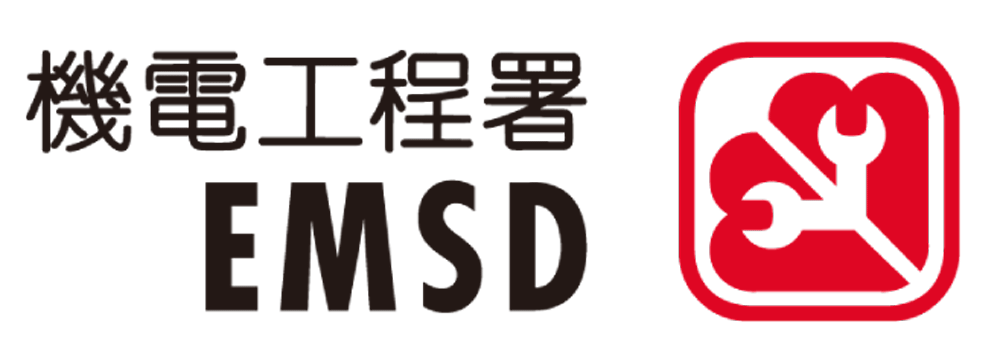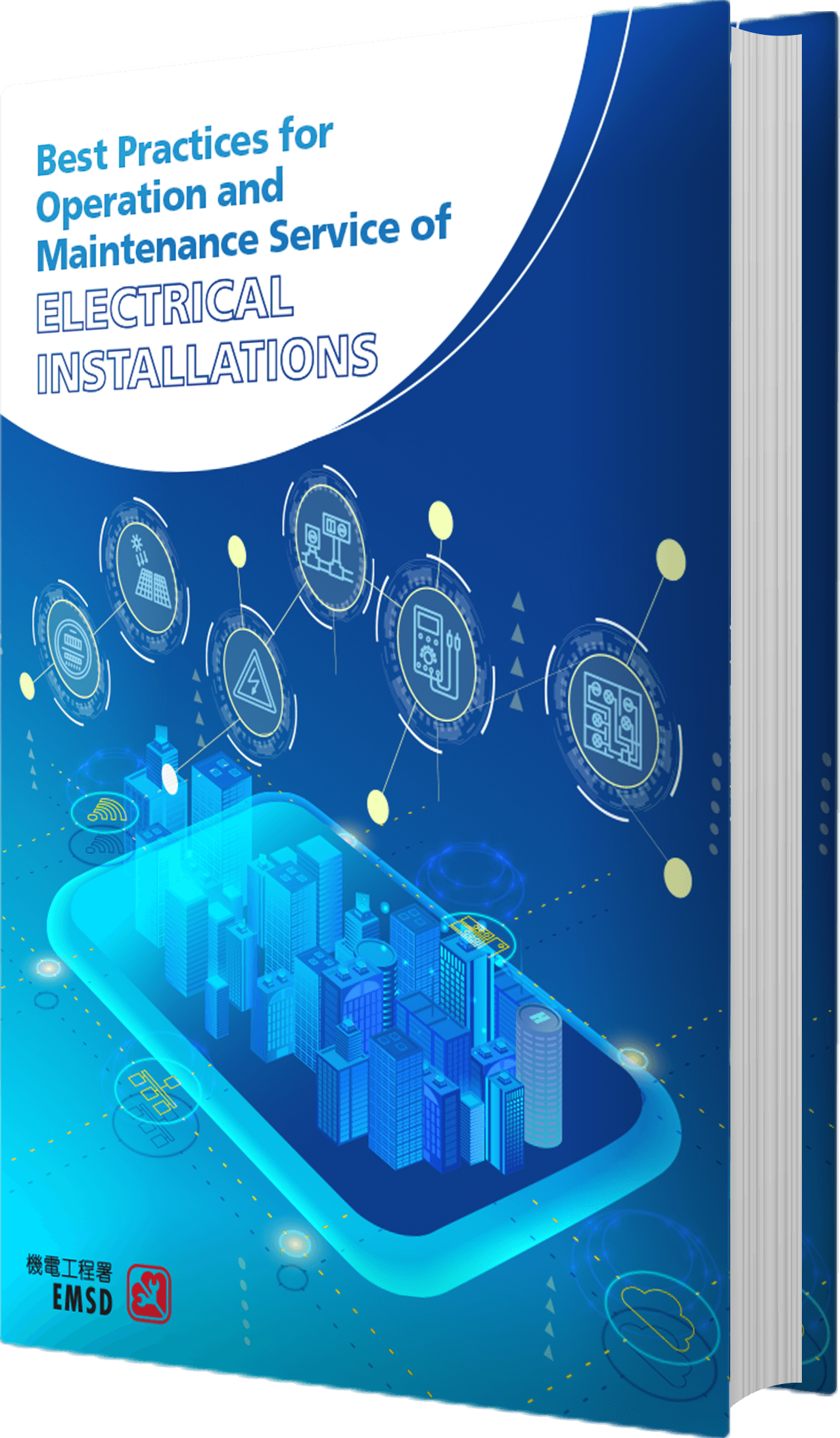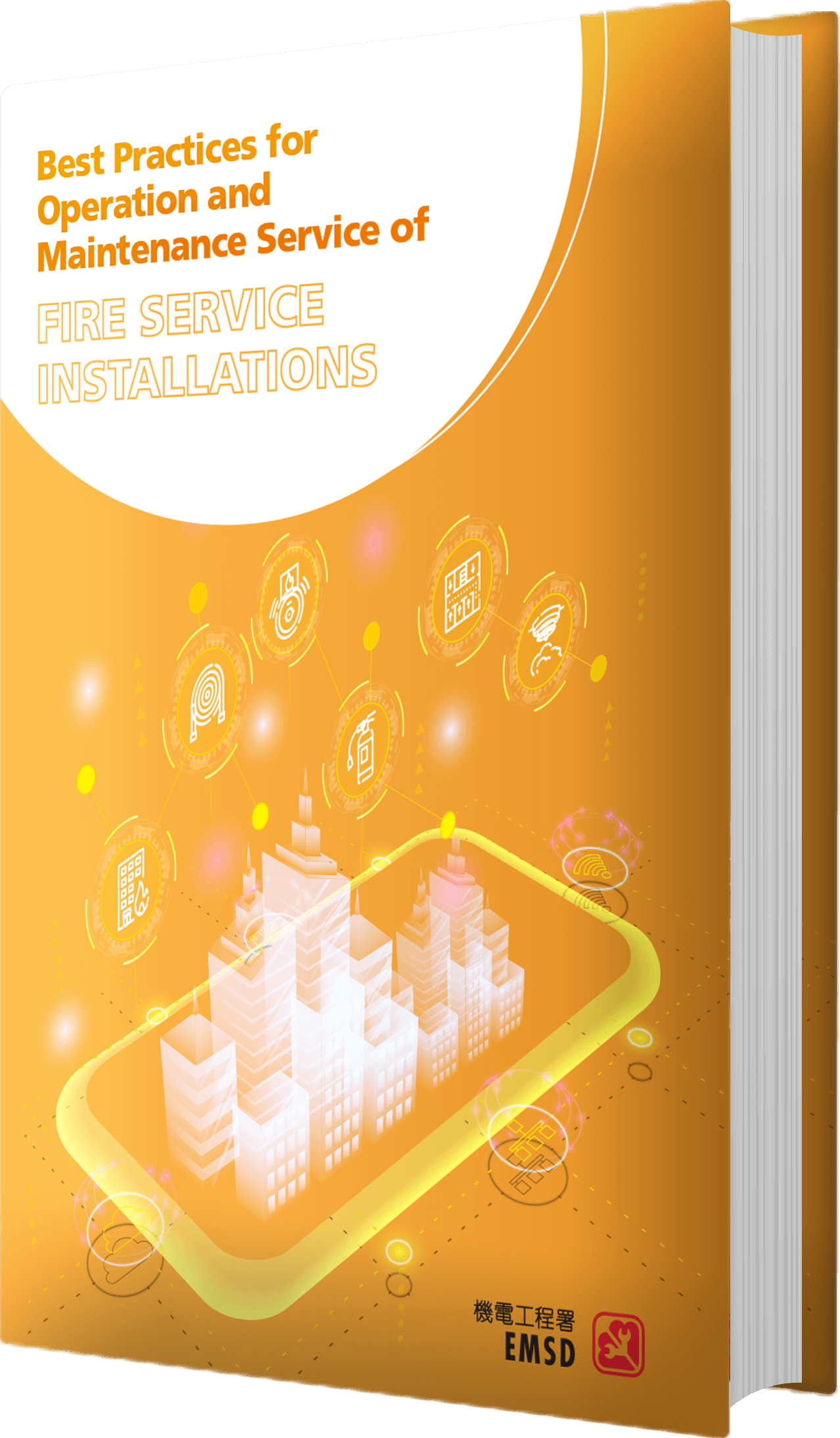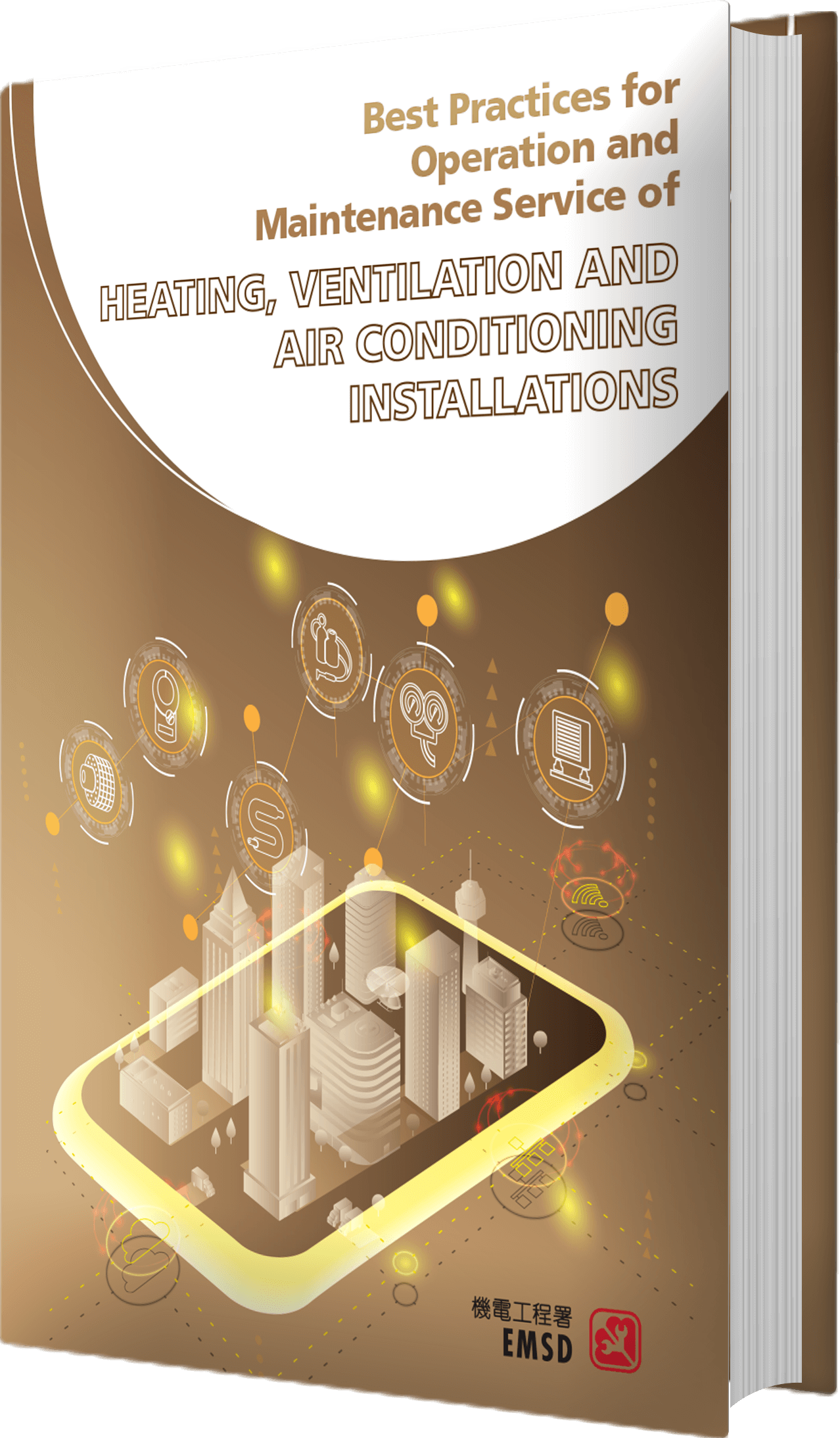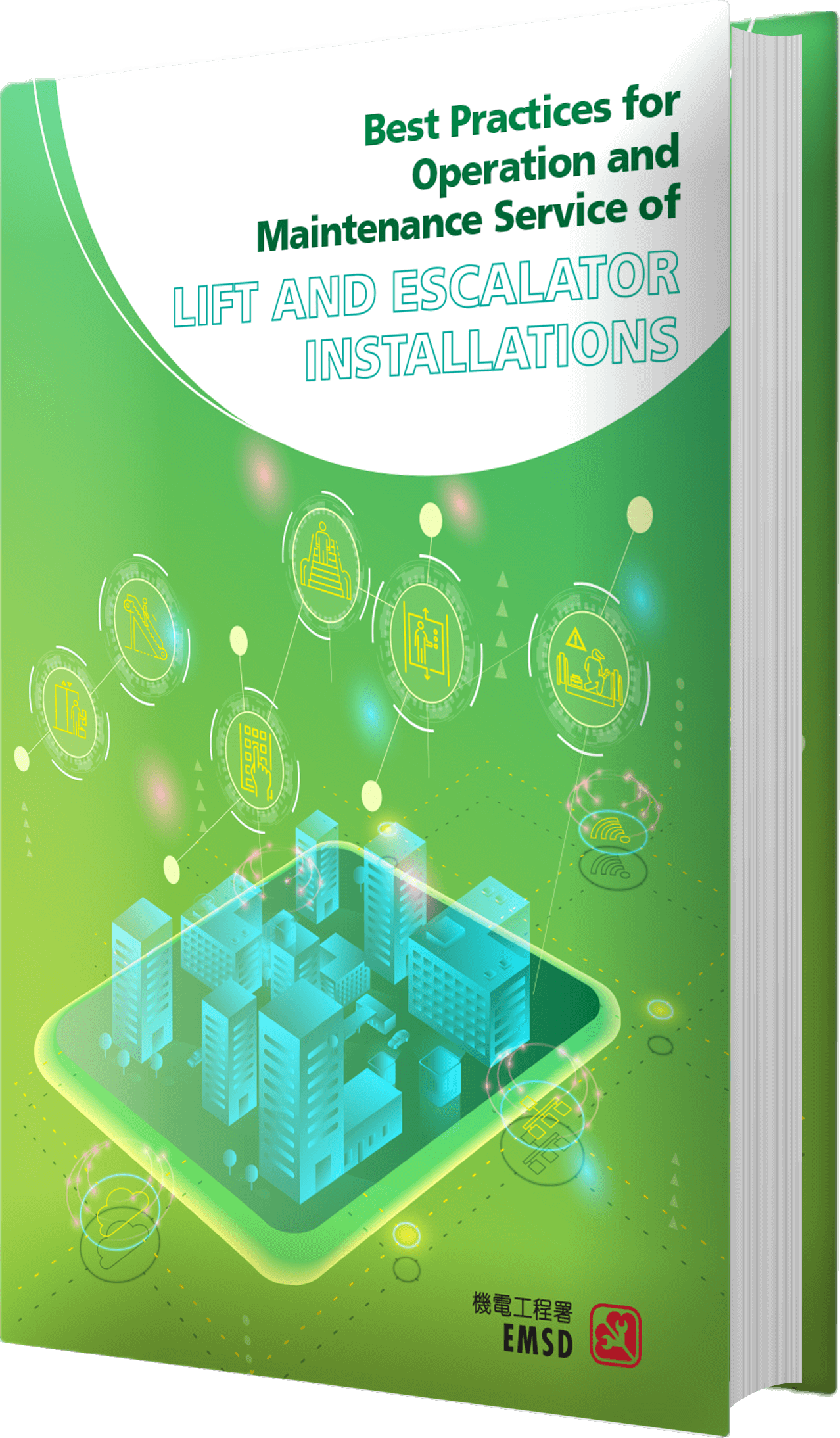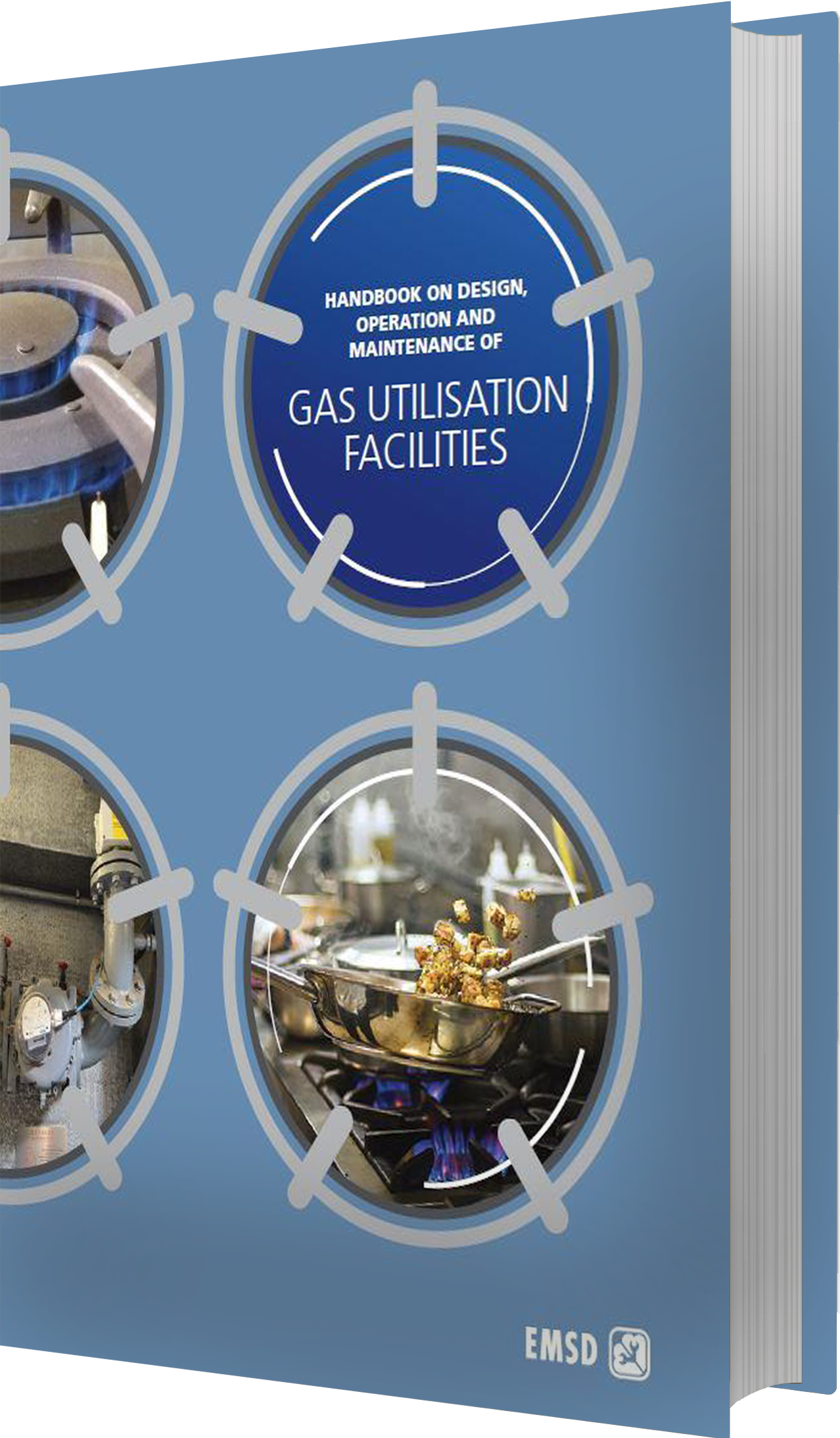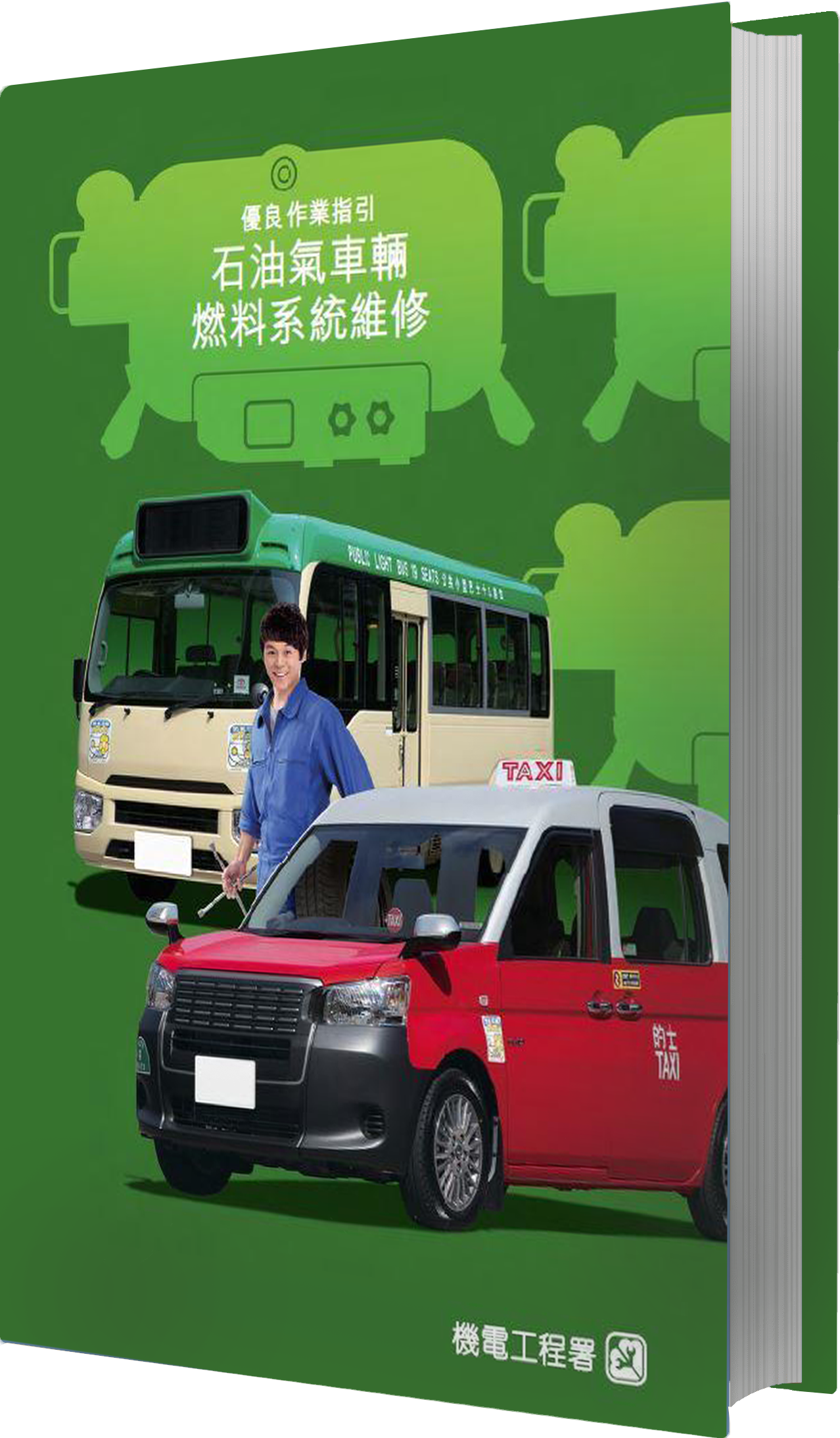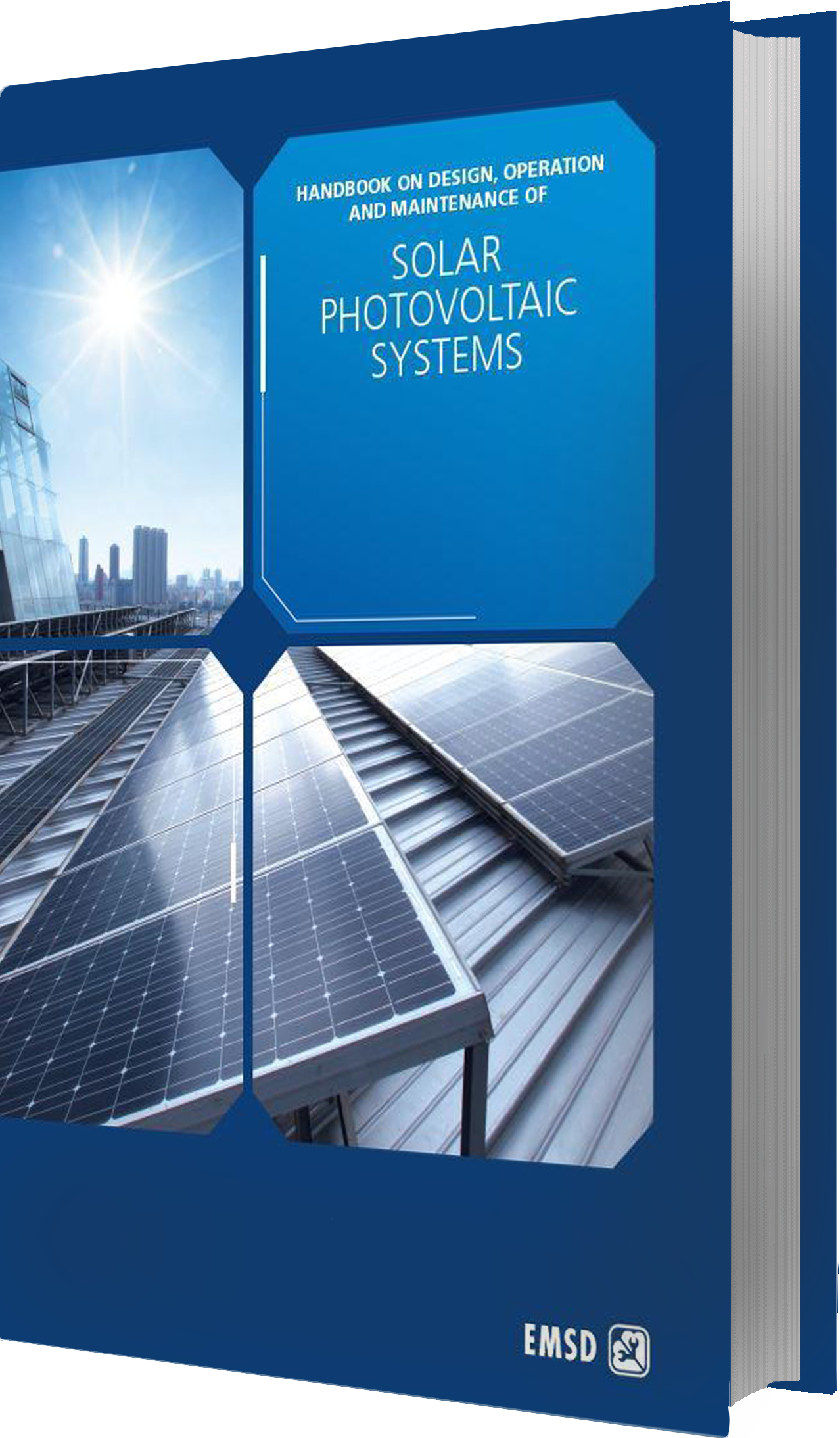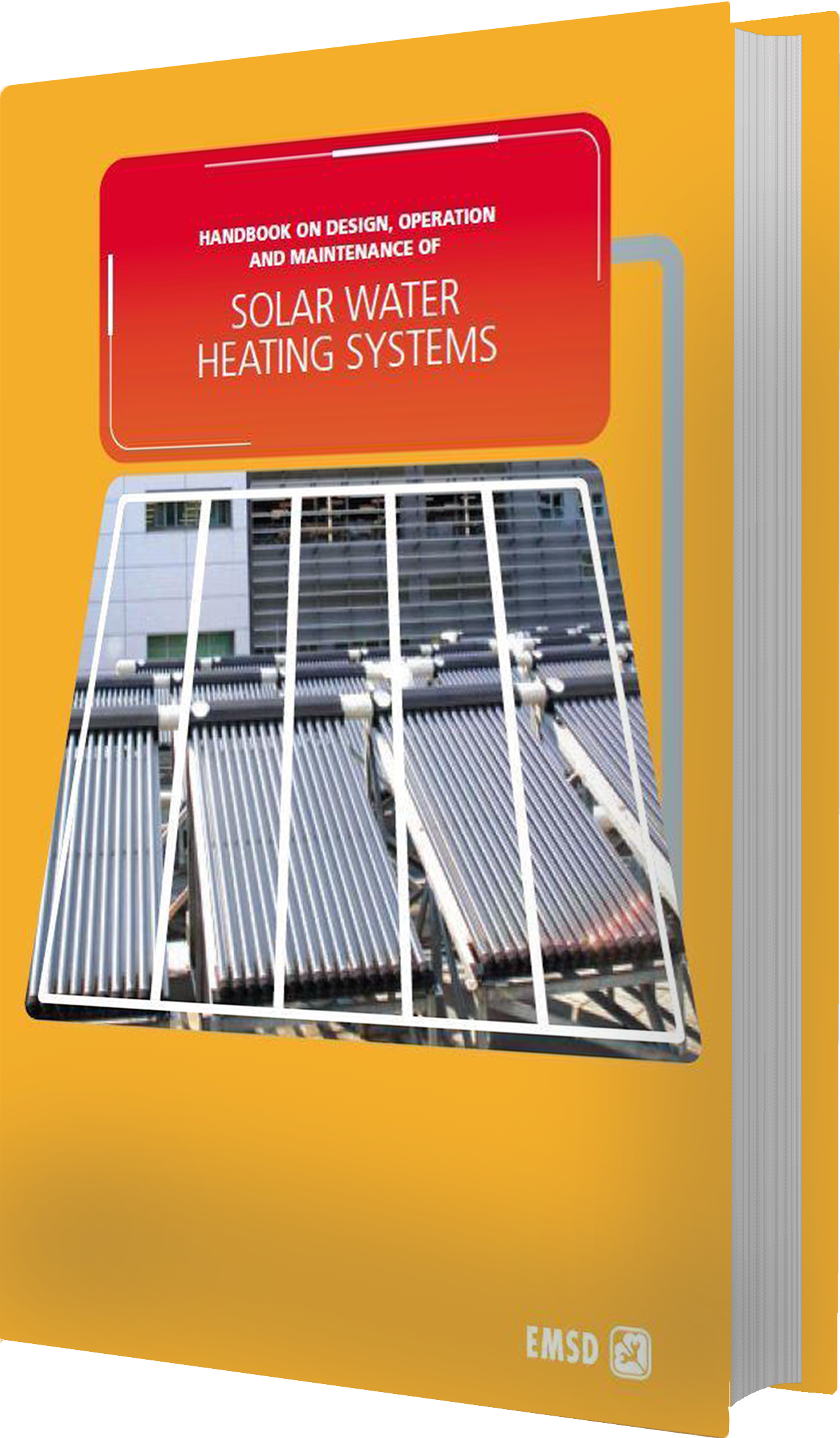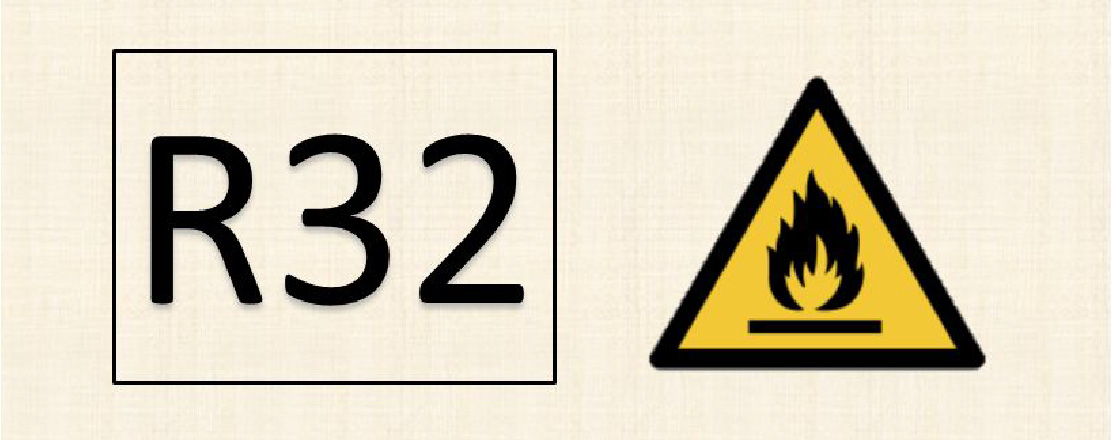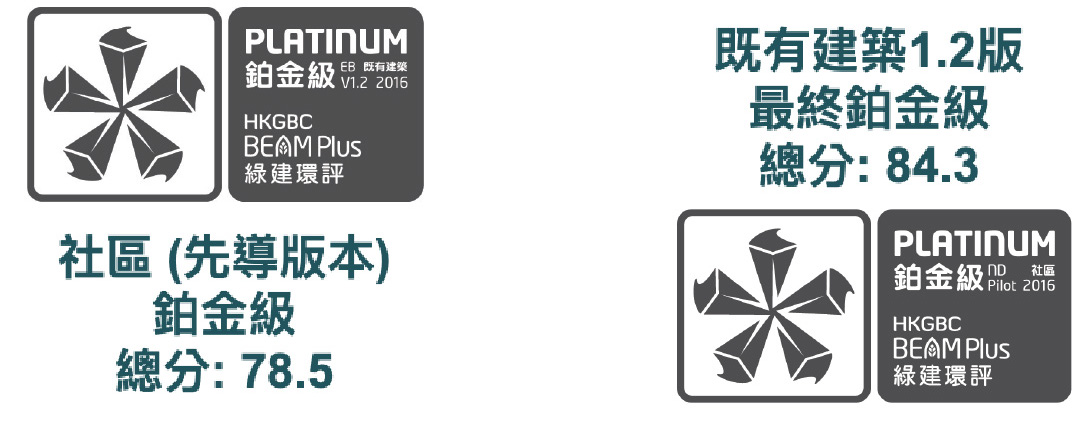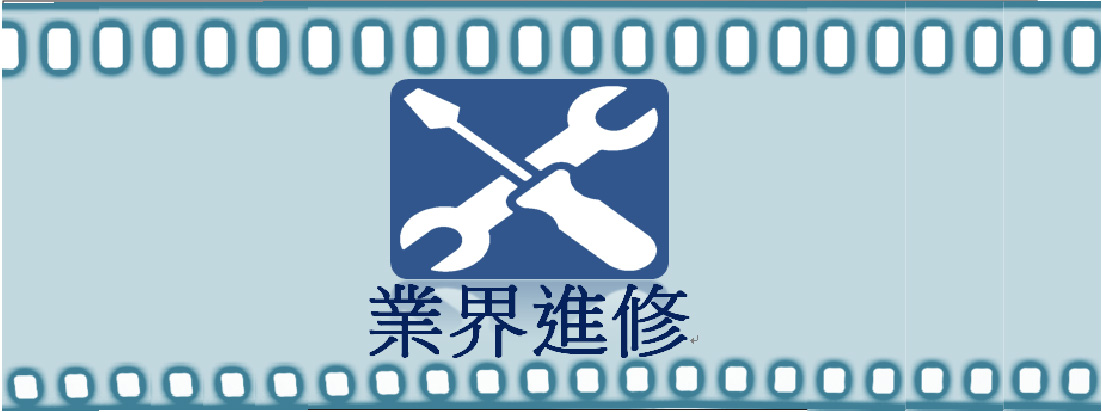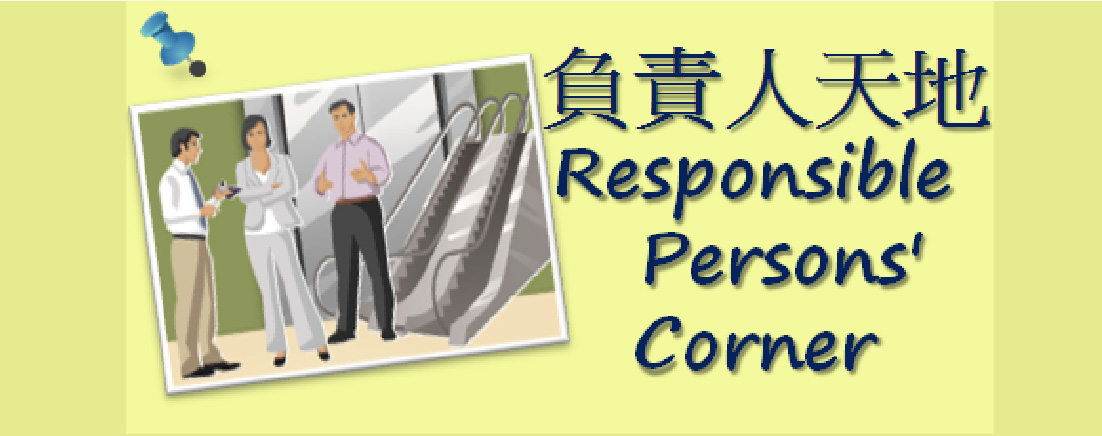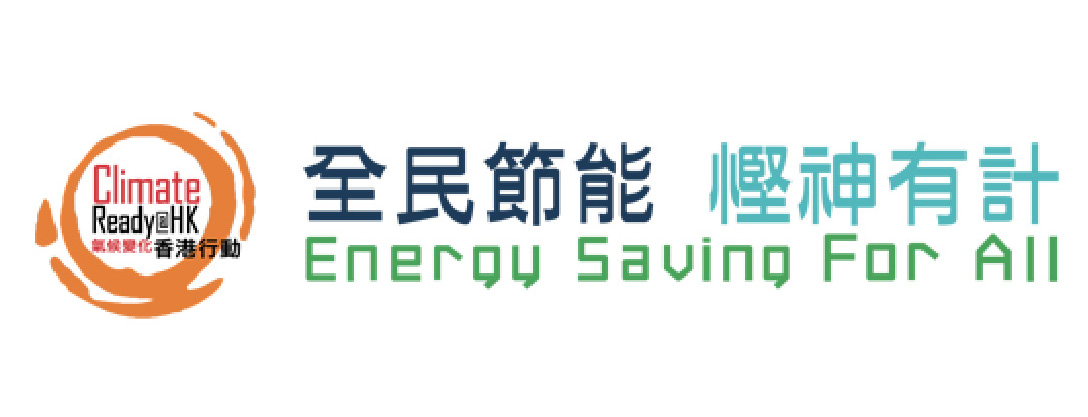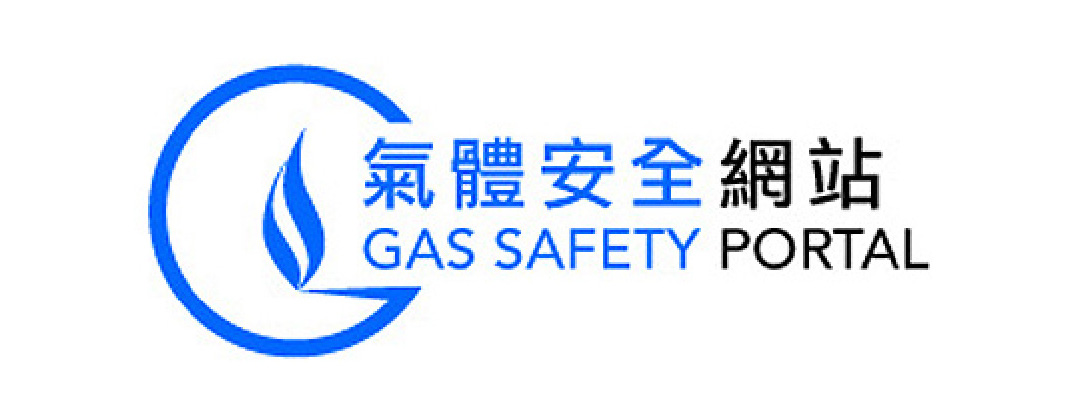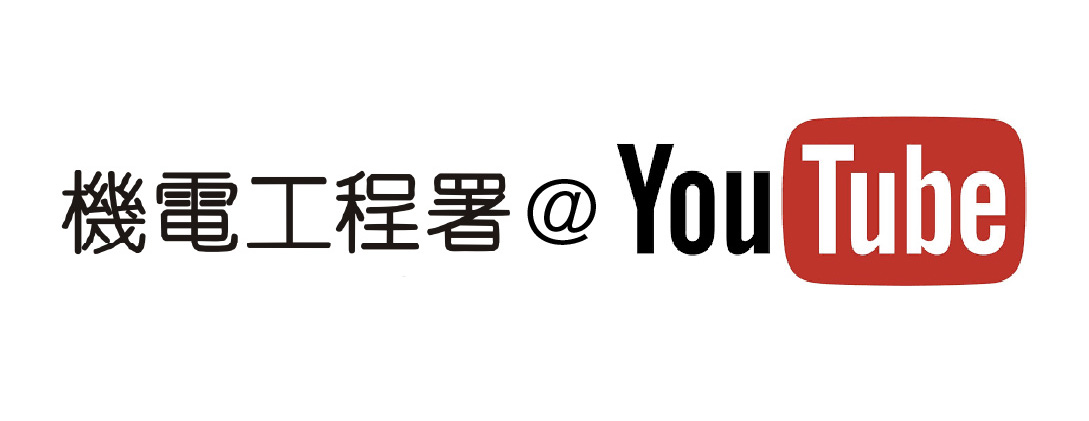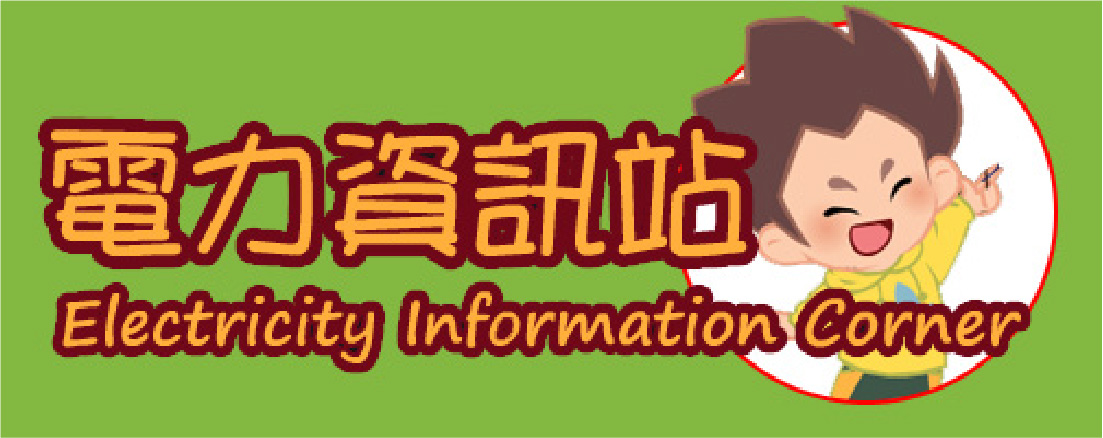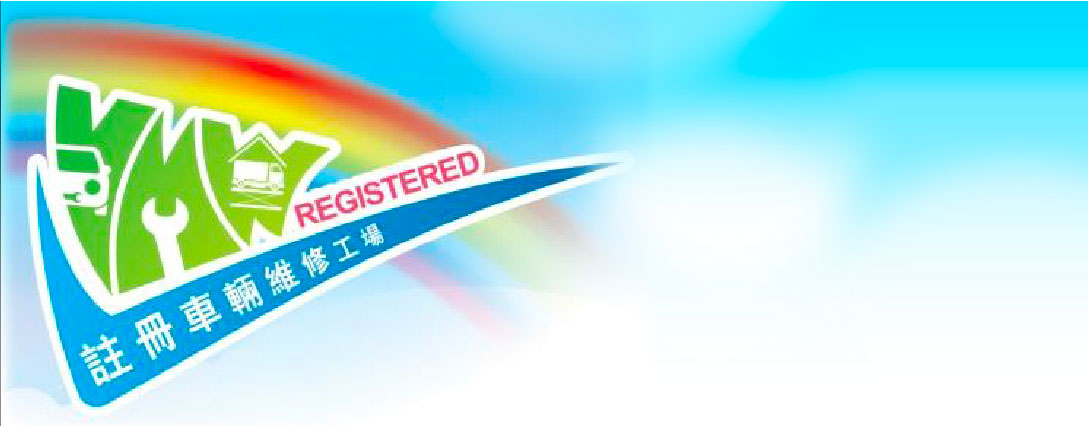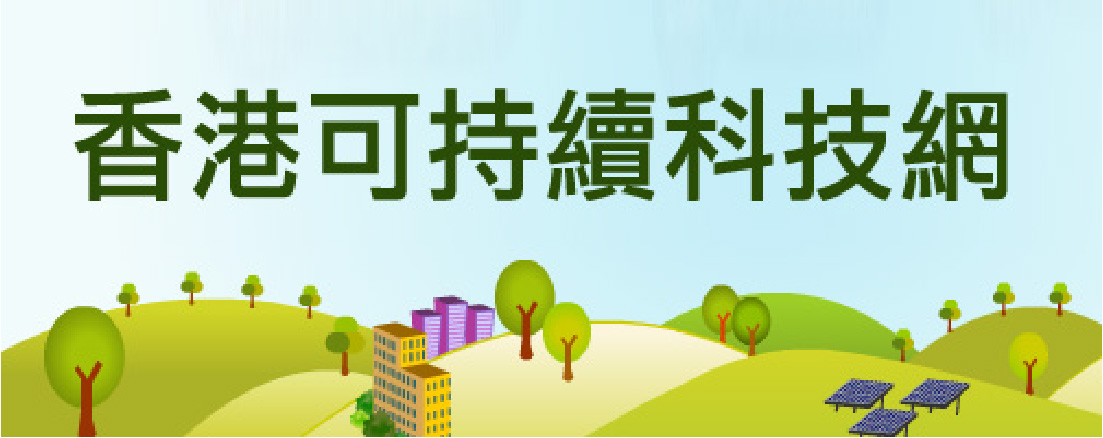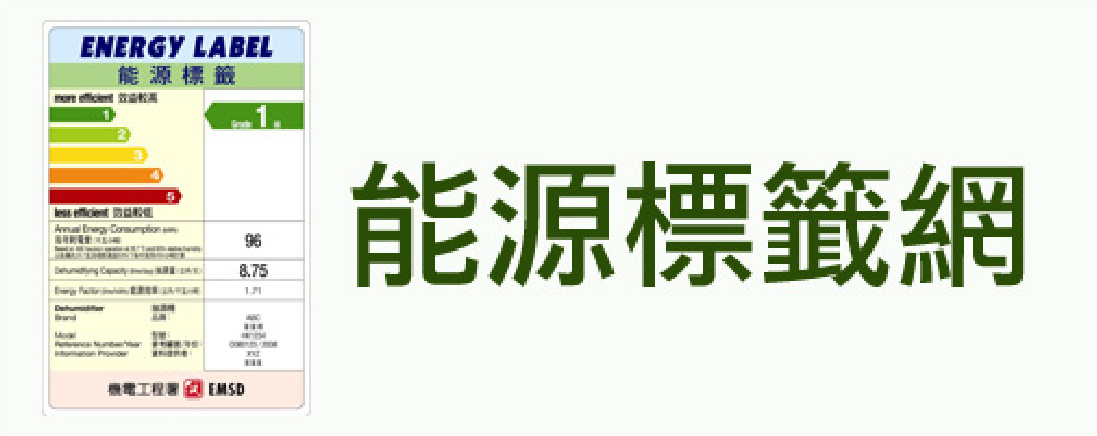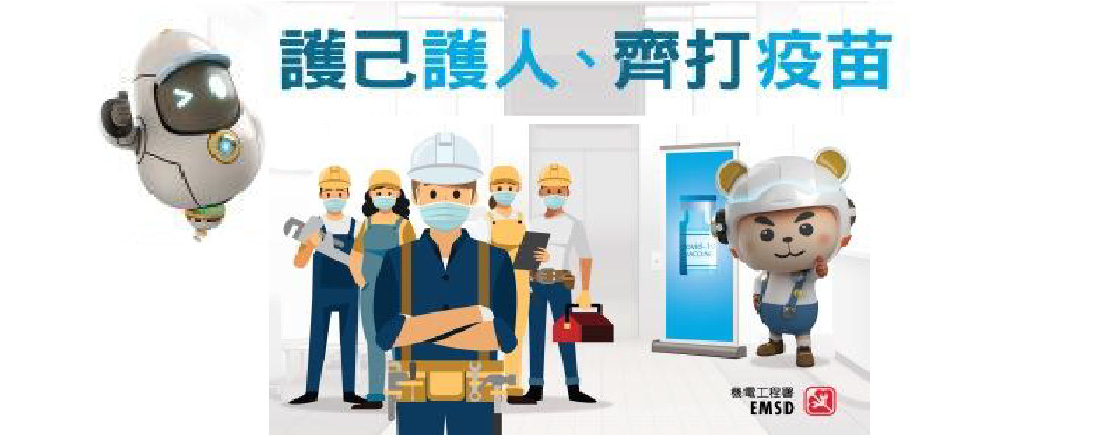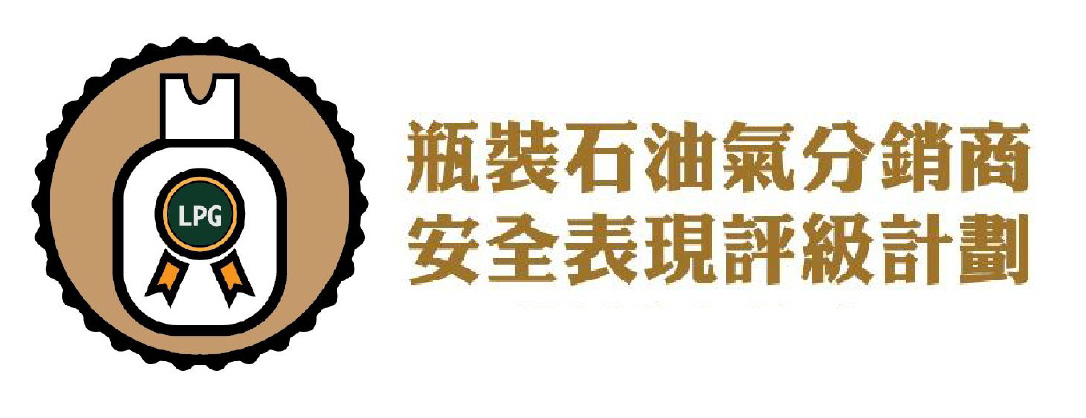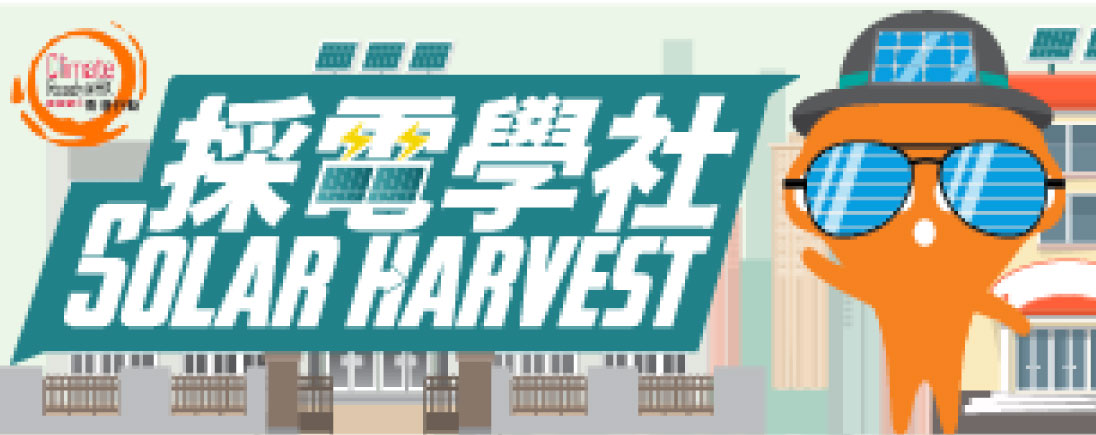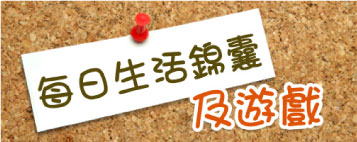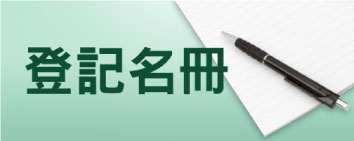1. Introduction
2. Key Model Framework
2.1
O&M Input on Design for New Building
2.2
Asset Information (Documentation)
2.3
Operation Procedures
2.4
Emergency Preparedness
2.5
Preventive Maintenance Procedures / Standards
2.6
Corrective Maintenance
2.7
Maintenance Record Management
2.8
Spare Parts Management
2.9
Addition, Alteration and Replacement (Planning and Implementation)
2.10
Incident Management
2.11
Environmental and Safety Management
2.12
Application of Technologies
2.13
Stakeholder Management
2.14
Information Management
2.15
Structure and Qualification of O&M Team
3. Innovative & Technology Initiatives
3.1
Technology Trend 1: Building Information Modeling for Asset Management (BIM-AM)
3.2
Technology Trend 2: Integrated Building Management System (iBMS)
3.3
Technology Trend 3: Predictive Maintenance using Artificial Intelligence (AI), Internet of Things (IoT) and Big Data
3.4
Technology Initiatives
4. Industry Standards and Requirements
5. Useful Forms/ Check List - Samples
Useful Forms/ Check List – Samples
5.1 Schedule of Test Results for Electrical Wiring (Sample)
Distribution Board Location & No.: ________________________________________
Testing Instrument: ________________________________________
| Circuit Description | Protective Device | Wining Conductor | Test Result | ||||||||||||
|---|---|---|---|---|---|---|---|---|---|---|---|---|---|---|---|
| Continuity | Insulation Resistance | Polanity | Earth Loop Impedance (Zs) (Ω) |
Functional Test | Remarks | ||||||||||
| Type | Rating (A) |
Live (mm2) |
cpc (mm2) |
Protective conductor (Ω) |
Ring fina circuit (Ω) |
L-L (MΩ) |
L-E (MΩ) |
RCD (ms) |
Other | ||||||
| Tested By: | |||||||||||||||
| Date: | |||||||||||||||
Declaration:
The above information is true to the best of my knowledge and belief. I understand that I may be liable to criminal prosecution if I knowingly provide false information.
Note:
This sample test record form may be download from EMSD's homepage at www.emsd.gov.hk (path: Protecting Public Safety > Electricity > Pubications).
L represents live conductors, including phase conductors and neutral conductors.
Checklists for Inspection and Testing of Electrical Installations
(Note: For the use of the following five checklists, please refer to Code 22)
Checklist No. 1—Items For New LV Installation or Items For Periodic Testing of LV Installations
Installation Address: ________________________________________
| (a) Switchboards, Circuit Breakers and Main Switches | Tested by/Date (N/A if not applicable) | |
|---|---|---|
| (i) | No visible damage to impair safety. | |
| (ii) | Safe access provided. | |
| (iii) | Every circuit breaker, main switch and fuse holder(s) provided with up-to-date, legible and durable rating labels giving their ratings. | |
| (iv) | Every circuit breaker and main switch provided with a legible and durable identification label. | |
| (v) | An up-to-date schematic diagram displayed to show the main distribution system. | |
| (vi) | Link of adequate size installed in neutral circuit. | |
| (vii) | All accessible live parts screened with insulating plate or earthed metal. | |
| (viii) | The overload and fault current protection characteristics of all circuit breakers verified with secondary injection test instruments where appropriate. | |
| (ix) | Lowest insulation resistance being ___Mohms (not less than 1 Mohm) measured between phases/neutral/earth. | |
| (x) | All exposed conductive parts effectively earthed with a maximum earth fault loop impedance being ____ohms. | |
| (The following item(s) under this section shall be included for low voltage installations which was connected to supply after 1st Jun 1992) | ||
| (xi) | An up-to-date notice of periodic inspection and testing provided at point of supply (i.e. a switchboard, a circuit breaker or a distribution board) of the installation in compliance with Code 17D. | |
| (b) Substations | Tested by/Date (N/A if not applicable) | |
|---|---|---|
| (The following item(s) under this section shall be included for low voltage installations which was connected to supply after 1st Jun 1992) | ||
| (i) | A warning notice ‘DANGER SUBSTATION, UNAUTHORISED ENTRY PROHIBITED’ and ‘危險 ──── 電力分站,未經授權不得內進’ provided at every entrance of substations in compliance with Code 17A(1). | |
| (ii) | Suitable locking facilities provided for HV substations in compliance with Code 4F(1)(c). | |
| (iii) | Suitable lighting provided in compliance with Code 4F(3)(a). | |
| (iv) | Suitable ventilation provided in compliance with Code 4F(3)(a). | |
| (v) | Entrance/exit free of obstruction in compliance with Code 4F(2)(c). | |
| (c) Switchrooms | Tested by/Date (N/A if not applicable) | |
|---|---|---|
| (The following item(s) under this section shall be included for low voltage installations which was connected to supply after 1st Jun 1992) | ||
| (i) | A warning notice ‘DANGER SUBSTATION, UNAUTHORISED ENTRY PROHIBITED’ and ‘危險 ──── 有電,未經授權不得內進’ provided at every entrance of switchrooms in compliance with Code 17A(2). | |
| (ii) | Suitable locking facilities provided for HV Switchrooms in compliance with Code 4F(1)(c). | |
| (iii) | Suitable lighting provided in compliance with Code 4F(3)(a). | |
| (iv) | Suitable ventilation provided in compliance with Code 4F(3)(a). | |
| (v) | Entrance/exit free of obstruction in compliance with Code 4F(2)(c). | |
| (d) Busbar Trunking System including Rising Mains | Tested by/Date (N/A if not applicable) | |
|---|---|---|
| (i) | No visible damage to impair safety. | |
| (ii) | Phase identification marked on both ends of main cable/ conductor, and at terminations. | |
| (iii) | All joints of metal conduit or trunking to be mechanically sound, electrically continuous and protected against corrosion. | |
| (iv) | All accessible live parts screened with an insulating plate or earthed metal. | |
| (v) | Lowest insulation resistance being ______Mohms (not less than 1 Mohm) measured between phases/neutral/earth. | |
| (vi) | All metal conduit or trunking effectively earthed with a maximum earth fault loop impedance being ______ohms. | |
| (e) Meter Board/Box | Tested by/Date (N/A if not applicable) | |
|---|---|---|
| (i) | No visible damage to impair safety. | |
| (ii) | Safe access provided. | |
| (iii) | All exposed metal parts effectively earthed with a maximum earth fault loop impedance being ______ohms. | |
| (f) Overhead Lines | Tested by/Date (N/A if not applicable) | |
|---|---|---|
| (i) | No visible damage to impair safety. | |
| (ii) | A minimum height of ____metres from ground (not less than 5.8 metres for lines acrossing any place accessible to vehicular traffic, 5.2 metres in other places or not less than the tallest height restriction of ________metres). | |
| (iii) | Lowest insulation resistance being ________ Mohms (not less than 1 Mohm) measured between phases/ neutral/earth. | |
| (iv) | All metal work associated with every steel pole effectively earthed. | |
| (g) Main Cables | Tested by/Date (N/A if not applicable) | |
|---|---|---|
| (i) | No visible damage to impair safety. | |
| (ii) | Cables protected against mechanical damage. | |
| (iii) | Correct phase identification provided at both ends of the cable. | |
| (iv) | Lowest insulation resistance being ______Mohms (not less than 1 Mohm) measured between cores and cores to earth. | |
| (v) | All exposed metal parts including the cable armour effectively earthed with a maximum earth fault loop impedance being ________ohms. | |
| (h) Distribution Board | Tested by/Date (N/A if not applicable) | |
|---|---|---|
| (i) | No visible damage to impair safety. | |
| (ii) | No fuse installed in the neutral circuit. | |
| (iii) | All live parts screened with an insulating plate or earthed metal. | |
| (iv) | Phase identification provided on the distribution board. | |
| (v) | Insulation resistance of not less than 1 Mohm measured between phases/ neutral/ earth. | |
| (vi) | All exposed metal parts effectively earthed. | |
| (The following item(s) under this section shall be included for low voltage installations which was connected to supply after 1st Jun 1992) | ||
| (vii) | A warning notice ‘DANGER’ and ‘危險’ provided on the front panel of every distribution board in compliance with Code 17A(3). | |
| (viii) | A notice of periodic testing provided at or near the main distribution board incorporating a residual current device (RCD) in compliance with Code 17E. | |
| (i) Final Circuits | Tested by/Date (N/A if not applicable) | |
|---|---|---|
| (i) | No visible damage to impair safety. | |
| (ii) | All non-armoured cables susceptible to damage protected with steel conduit/trunking. Bushing and rubber grommet, where necessary, provided. | |
| (iii) | Conductor sized to suit the rating of the fuse/MCB protecting the circuit. | |
| (iv) | No cable joint in final circuit. | |
| (v) | All joints of metal conduits or trunking to be mechanically sound, electrically continuous and protected against corrosion. | |
| (vi) | For temporary installation, cables lying on the ground or attached to scaffoldings secured on suitable supports. | |
| (vii) | Insulation resistance of not less than 1 Mohm measured between phases/ neutral/earth. | |
| (viii) | All metal conduits, trunking, switch boxes and exposed metal parts effectively earthed. | |
| (ix) | Residual current devices function properly. | |
| (x) | Earth fault loop impedance and polarities of every outlet checked. | |
| (j) Motors | Tested by/Date (N/A if not applicable) | |
|---|---|---|
| (i) | No visible damage to impair safety. | |
| (ii) | Insulation resistance of not less than 1 Mohm measured between phases/ neutral/earth. | |
| (iii) | All exposed conductive parts effectively earthed. | |
| (k) Earthing | Tested by/Date (N/A if not applicable) | |
|---|---|---|
| (i) | No visible damage to impair safety. | |
| (ii) | All exposed conductive parts of the wiring installation connected to the earthing terminal with appropriate protective conductor. | |
| (iii) | Bonding/earthing connection to water pipe/ gas pipe/duct effectively connected. | |
| (The following item(s) under this section shall be included for low voltage installations which was connected to supply after 1st Jan 1985) | ||
| (iv) | A warning notice ‘SAFETY *EARTH/ ELECTRICAL CONNECT DO NOT REMOVE' and ‘安全接地終端 ──── 切勿移去’ provided at all main earthing terminal and main bonding connections. | |
| (v) | Main equipotential bonding conductors effectively connected to main water pipes, main gas pipes, other services pipes/ducting and exposed metallic parts of structural framework. | |
| (vi) | Supplementary equipotential bonding effectively provided between exposed conductive parts and extraneous conductive parts. | |
| (vii) | Exposed conductive parts of fixed equipment installed outside equipotential zone effectively earthed for the required disconnection. | |
| (viii) | Exposed conductive parts of fixed equipment installed within equipotential zone effectively earthed for the required disconnection. | |
| (ix) | Effectiveness of the main equipotential bonding connection to the main earthing terminal. | |
| (x) | Effectiveness of the main equipotential bonding connection to the lighting protection system. | |
| (l) Motors | Tested by/Date (N/A if not applicable) | |
|---|---|---|
| (i) | No visible damage to impair safety. | |
| (ii) | Insulation resistance of not less than 1 Mohm measured between phases/ neutral/earth. | |
| (iii) | All exposed conductive parts effectively earthed. | |
| (m) Neon Sign | Tested by/Date (N/A if not applicable) | |
|---|---|---|
| (i) | No visible damage to impair safety. | |
| (ii) | The fireman’s switch clearly labelled. | |
| (iii) | All high voltage equipment enclosed in an earthed metal box fitted with a ‘DANGER’ and ‘危險’ warning notice. | |
| (iv) | All live parts screened with an insulation plate or earthed metal. | |
| (v) | High voltage cables securely supported with glass or glazed porcelain. | |
| (vi) | Insulation resistance of the LV circuit being ____Mohms (not less than 1 Mohm) between phases/ neutral/earth. | |
| (vii) | All exposed metalwork permanently and effectively bonded and earthed with a maximum earth fault loop impedance of ______ohms measured at LV side. | |
*Delete whichever is inapplicable
Remarks:
REC and REW are required to ensure their responsible fixed electrical installation is able to comply with the relevant requirements of this Code of Practice, rather than the items as listed in the checklists only.
Checklist No.2 - Additional Items for New LV Installation
Installation Address: ________________________________________
| (a) Switchboards, Circuit Breakers and Main Switches | Tested by/Date (N/A if not applicable) | |
|---|---|---|
| (i) | Safe access and adequate clearance space provided in compliance with Code 4E. | |
| (ii) | Number of source of supply:_______ and the rating of each of them:_____ |
|
| (iii) | Maximum loading approved by the electricity supplier:_______________ | |
| (iv) | Suitable interlock scheme provided to prevent parallel operation of two or more sources of supply and 4-pole incoming and interconnecting circuit breakers provided for supply to be taken from more than one source and is interconnected in compliance with Code 6B(1)(c). | |
| (v) | Electrically and mechanically interlocked 4-pole changeover device(s) where standby generator set(s) is installed in compliance with Code 8A(1)(d). | |
| (vi) | The breaking capacity of the main switch is ________ kA and all circuit breakers/inter-connection devices are able to withstand the prospective fault current in compliance with Code 9C. | |
| (vii) | Protective relays have been correctly set and overcurrent protective devices suitably set for all circuits in compliance with Code 21A(i). | |
| (viii) | Protective type C.T. are used for protective relays. | |
| (ix) | A means of isolation provided for every circuit in compliance with Code 8A(1)(c)(i). | |
| (x) | Operation of circuit breakers and main switches checked in compliance with Code 21B(9). | |
| (xi) | Control, indication and alarm functions checked in compliance with Code 21B(2)(viii). | |
| (xii) | No undersized conductor used between the main busbar and fuse/ MCB’s in compliance with Code 13A(3). | |
| (xiii) | Fuses/MCB's matching the lowest rated conductor in the circuit in compliance with Code 9B. | |
| (xiv) | Suitable cable terminations provided in compliance with Code 25D. | |
| (xv) | Cable conductors of correct phases connected in compliance with Code 21A(b). | |
| (xvi) | Single-pole devices for protection or switching connected in phase conductors only in compliance with Code 10B. | |
| (b) Busbar Trunking System including Rising Mains | Tested by/Date (N/A if not applicable) | |
|---|---|---|
| (i) | The current rating of the rising mains is _______ amperes. | |
| (ii) | The rising mains, lateral mains and meter boards positioned at places accessible from public area. | |
| (iii) | Fire barriers provided where the busbar trunking system passes through floor slabs or walls designated as fire barriers in compliance with Code 14A(3). | |
| (iv) | Cables passing through smoke lobby protected by enclosures of adequate fire rating. | |
| (v) | Non-sheathed cables protected by conduit, trunking or ducting in compliance with Code 15. | |
| (vi) | Busbar trunking systems, cables and ductings adequately supported in compliance with Code 14A(2). | |
| (vii) | Armoured cables properly terminated to metal casing or trunking by proper cable glands in compliance with Code 25D(7). | |
| (viii) | Suitable cable lugs used for terminating cables in compliance with Code 4, Code 13C and Code 25D. | |
| (ix) | Precaution against corrosion taking on aluminium conductor joined to copper conductor in compliance with Code 25D(7)(d)(ii). | |
| (x) | Cutout fuses for tapping off supply fitted with insulated carriers in compliance with Code 26B(6)(e). | |
| (c) Overhead Lines | Tested by/Date (N/A if not applicable) | |
|---|---|---|
| (i) | A steel carrier wire provided between poles to prevent strain on conducton in compliance with Code 16A and 16H. | |
| (ii) | Substantial steel poles used to suspend cables crossing vehicular passes in compliance with Code 26K(3)(b)(ii). | |
| (iii) | Overhead cables supported on suitable insulators in compliance with Code 16B. | |
| (iv) | Suitable stay wires installed on the terminal poles and on each pole at which the line changes its direction in compliance with Code 16G(1). | |
| (v) | Minimum clearance of overhead lines to ground, roads and obstacles maintained in compliance with Code 16E(2)(a), (b) and (c). | |
| (d) Main Cables | Tested by/Date (N/A if not applicable) | |
|---|---|---|
| (i) | The cross-sectional area or each core of the main supply cable is _____mm2. Number of cables in parallel, if connected is___________. | |
| (ii) | Armoured cables properly terminated to metal casing or trunking by proper cable glands in compliance with Code 25D(7). | |
| (iii) | Cables passing through smoke lobby protected by enclosures of adequate fire rating. | |
| (iv) | Non-sheathed cables protected by conduit, trunking or ducting in compliance with Code 15. | |
| (v) | Cables and ductings adequately supported in compliance with Code 14A(2). | |
| (vi) | Cables at distribution board or busbar terminated with cable lugs in compliance with Code 4, Code 13C and Code 25D. | |
| (vii) | Main cables connected up with correct polarity | |
| (e) Distribution Board | Tested by/Date (N/A if not applicable) | |
|---|---|---|
| (i) | Safe access and adequate clearance space provided in compliance with Code 4E. | |
| (ii) | Distribution boards securely mounted on suitable supports in compliance with Code 14A(2). | |
| (iii) | A suitable switch provided to control each distribution board in compliance with Code 8A(1)(a). | |
| (iv) | Phase barriers for 3-phase distribution board provided in compliance with Code 21A(g). | |
| (v) | The breaking capacity of MCB is ________kA in compliance with Code 9. | |
| (vi) | Suitable tools for withdrawal of fuses at a fuse board provided, where necessary in compliance with Code 9E(d). | |
| (vii) | Circuits connected to MCB or fuse in accordance with the schematic diagram in compliance with Code 6A(b). | |
| (f) Final Circuits | Tested by/Date (N/A if not applicable) | |
|---|---|---|
| (i) | All fuses and single pole switches connected to the phase conductors only with correct polarity. | |
| (ii) | Wiring for emergency lightings and fire services installation segregated from other wirings in compliance with Code 5B(1)(b). | |
| (iii) | Low voltage circuits segregated from extra low voltage circuits in compliance with Code 5B(1)(a). | |
| (iv) | Cables of all phases and neutral of the circuit bunched and contained in the same conduit in compliance with Code 25A(1)(f). | |
| (v) | Exposed insulated non-sheathed cables protected in compliance with Code 15. | |
| (vi) | Wiring inside false ceiling protected by conduit/trunking or metallic sheath in compliance with Code 25C(1)(f). | |
| (vii) | Socket outlets installed below 1.5m from floor being shuttered type complying to the prescribed requirements. | |
| (viii) | No socket outlet installed close to water tap, gas tap or cooker so as to avoid danger in compliance with Code 25E(d). | |
| (ix) | Floor socket outlets protected with suitable cover in compliance with Code 25E(b). | |
| (x) | No 2-pin sockets installed. All socket outlets connected with protective conductors and live conductors terminated at correct terminals. | |
| (xi) | Radial final circuits using 5A/15A socket outlets in compliance with Code 6D. | |
| (xii) | Final circuits using 13A socket outlets in compliance with Code 6E. | |
| (xiii) | Final circuits using industrial socket outlets in compliance with Code 6F or 6G or 6H. | |
| (xiv) | Circuit protective conductor is formed by the enclosure and a separate protective conductor between the earthing terminal of socket outlet and its associated metal box provided in compliance with Code11D(3). | |
| (xv) | Circuit protective conductor is not formed by the enclosure and a separate protective conductor to the earthing terminal of socket outlet provided in compliance with Code 11D(3). | |
| (xvi) | Residual current device of 30 mA rated residual operating current provided for all socket outlets in compliance with Code 11B(b)(i). | |
| (xvii) | Means of isolation provided for every fixed appliance in compliance with Code 8A(1)(c). | |
| (xviii) | All chokes, starters and capacitors of discharge lamps enclosed in earthed metal box(es) and suitably ventilated in compliance with Code 26H(4)(c). | |
| (xix) | Phase conductors connected to the centre contact of the Edison-type screw lamp holders in compliance with Code 21B(6)(ii). | |
| (xx) | No switches other than a switch fed from a safety source or operated by an insulation cord or rod or a push-button type of switch having an insulated button of a large surface area provided in bathrooms in compliance with Code 26A(3)(d). | |
| (xxi) | Shaver supply unit complying with IEC 61558-2-5 or equivalent in compliance with Code 26A(3)(e). | |
| (xxii) | Socket outlet in bathroom installed beyond Zone 2 (i.e. 0.6m away from shower basin or bathtub) protected by an RCD with a residual operating current not exceeding 30mA or protected by an isolating transformer to IEC 61558 in compliance with Code 26A(3)(j). | |
| (xxiii) | No fixed luminaire nor fixed heater having unguarded heating elements installed within reach of a person using the bath or shower in compliance with Code 26A(3)(h). | |
| (xxiv) | All circuits supplying electrical equipment with exposed conductive parts within 2.25m height above finished floor level in bathroom protected by RCD having a rated residual operating current not exceeding 30mA in compliance with Code 26A(3)(a). | |
| (xxv) | Appliances exposed to weather being splashproof type in compliance with Code 15A. | |
| (xxvi) | Luminaires, switches, sockets and plugs, cable couplers installed outdoor, being splashproof type in compliance with Code 15A. | |
| (xxvii) | General/site lighting readily accessible to the public supplied from a safety source in compliance with Code 26K(3). | |
| (xxviii) | General/site lighting not readily accessible to the public and not supplied from a safety source, protected by RCD having a rated residual operating current not exceeding 30 mA. | |
| (g) Motors | Tested by/Date (N/A if not applicable) | |
|---|---|---|
| (i) | A local switch provided to control every motor in compliance with Code 8A(4)(a). | |
| (ii) | Means provided to prevent unexpected restarting of motors where such restarting might cause danger in compliance with Code 8A(4)(c). | |
| (iii) | Flexible conduits terminated with suitable brass bushes in compliance with Code 25A(2)(b)(i). | |
| (iv) | Separate supply to motor heaters having its terminals screened, with warning notice provided. | |
| (h) Earthing | Tested by/Date (N/A if not applicable) | |
|---|---|---|
| (i) | Rod electrode(s) having a minimum diameter 12.5mm copper or 16mm galvanised or stainless steel used in compliance with Code 12C(2)(a) and (b). | |
| (ii) | Copper tape electrode having a cross-section of not less than 25mm x 3mm in compliance with Code 12C(3)(a). | |
| (iii) | Copper plate electrode not less than 3mm in thickness and having a maximum dimension of 1 200mm x 1 200mm in compliance with Code 12C(4). | |
| (iv) | No gas/water pipe used as earth electrodes in compliance with Code 12C(1)(b). | |
| (v) | A test link provided at the main earthing terminal. | |
| (vi) | Minimum size of protective conductor used in compliance with Table 11(1). | |
| (vii) | Protective conductor up to and including 6mm2 with green and yellow insulation sheath used throughout its length. | |
| (viii) | Bonding conductors of ________mm2 (not less than 150mm2 copper equivalent) used for connection to the earthing terminal of the electricity supplier’s transformer(s) in compliance with Code 11G(b). | |
| (ix) | Bonding conductors of ________mm2 (not less than 150mm2 copper equivalent) used for connection to the exposed conductive parts of the electricity supplier’s underground cable(s) in compliance with Code 11G(b). | |
| (x) | Copper links provided at joints of metallic trunking which forms part of a protective conductor in compliance with Code 14A. | |
| (xi) | Separate protective conductors provided for all flexible conduits in compliance with Code 11D(3)(b). | |
| (i) Lightning Protection | Tested by/Date (N/A if not applicable) | |
|---|---|---|
| (i) | Air termination network/down conductor/earth termination network having good continuity in compliance with relevant standard listed under Code 26I. | |
| (ii) | Joints and connections are mechanically and electrically sound in compliance with relevant standard listed under Code 26I. | |
| (iii) | Connection link to the main earthing terminal provided in compliance with relevant standard listed under Code 26I. | |
| (iv) | Test joint provided in compliance with relevant standard listed under Code 26I. | |
| (v) | Rod electrode(s) having a minimum diameter 12.5mm copper or 16mm galvanised or stainless steel used in compliance with Code 12C(2)(a) and (b). | |
| (vi) | Copper tape electrode having a cross-section of not less than 25mm x 3mm in compliance with Code 12C(3)(a). | |
| (vii) | Copper plate electrode not less than 3mm in thickness and having a maximum dimension of 1 200mm x 1 200mm in compliance with Code 12C(4). | |
| (viii) | No gas/water pipe used as earth electrodes in compliance with Code 12C(1)(b). | |
| (ix) | Measured earth termination network resistance to earth not more than 10 Ohm when the connection to main earthing terminal disconnected in compliance with relevant standard listed under Code 26I. | |
| (x) | No evidence of corrosion likely to lead deterioration of the lightning protection system. | |
| (j) High Voltage Discharge Lighting (Neon Signs) | Tested by/Date (N/A if not applicable) | |
|---|---|---|
| (i) | __________ ampere control switch fitted with a removable handle or locking facilities in compliance with Code 26H(2)(b). | |
| (ii) | Fireman's switch provided with the ‘OFF’ position at the top in compliance with Code 8B(4)(g)(ii). | |
| (iii) | High voltage cables exceeding 1 metre in length for connection between lamps and transformers, being metal sheathed or armoured. | |
| (iv) | Bare or lightly insulated conductors for high voltage connection protected with glass tubing. | |
| (k) Warning Notices and Labels | Tested by/Date (N/A if not applicable) | |
|---|---|---|
| (i) | Warning notices for substations and switchrooms provided in compliance with Code 17. | |
| (ii) | Warning notices for earthing and main bonding connections provided in compliance with Code 17. | |
| (iii) | All switchgears, distribution boards and electrical equipment properly labelled in compliance with Code 4D(1). | |
| (l) Installation Having Both New and Old Cable Colours | Tested by/Date (N/A if not applicable) | |
|---|---|---|
| (i) | Warning notice provided in compliance with Code 17 and Appendix 18. | |
| (ii) | Proper labels provided near the cable termination interface to identify new colour cables/conductors for 1-phase circuits in compliance with Appendix 18. | |
| (iii) | Proper labels provided near the cable termination interface to identify both the new and old colour cables / conductors for 3-phase circuits in compliance with Appendix 18. | |
| (iv) | Conductors are properly identified in compliance with Code 13D(2). | |
Remarks:
REC and REW are required to ensure their responsible fixed electrical installation is able to comply with the relevant requirements of this Code of Practice, rather than the items as listed in the checklists only.
Checklist No.3 - Item for Renewable Energy Power System (REPS) Installations
Installation Address: ________________________________________
| (a) Power Generating Equipment | Tested by/Date (N/A if not applicable) | |
|---|---|---|
| (i) | The solar PV panels are certified by the recognised national/international organisations or relevant testing and certification authorities complying with relevant safety standards such as IEC 61215, BS EN 61215, IEC 61730, UL 1703 or equivalent. | |
| (ii) | Other renewable energy power generating equipment (e.g. wind turbine) complies with relevant international design/safety standards. | |
| (b) Inver
Subscribe for future updates
In order to subscribe to the newsletter or to activate e-mail notifications and content updates, you can follow few simple steps described below.It allows users to receive customized e-mail notifications when content is added or modified in EMSD.
Subscribe
x
Subscribe for future updates
We will only send you emails about the update that you subscribe to, and you can unsubscribe at any time.
Last revision date: 6 Jun, 2023 This site is best viewed with: Chrome or Firefox © 2023 emsd.gov.hk x
Thank you for subscribing!
We will notify you of further updates.
|
|---|
